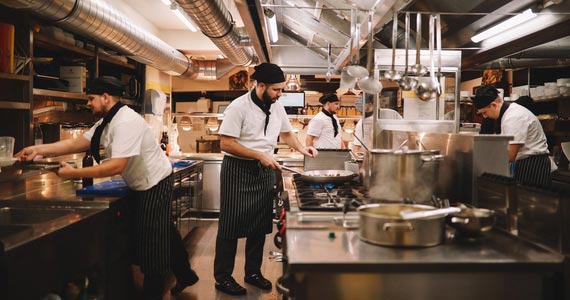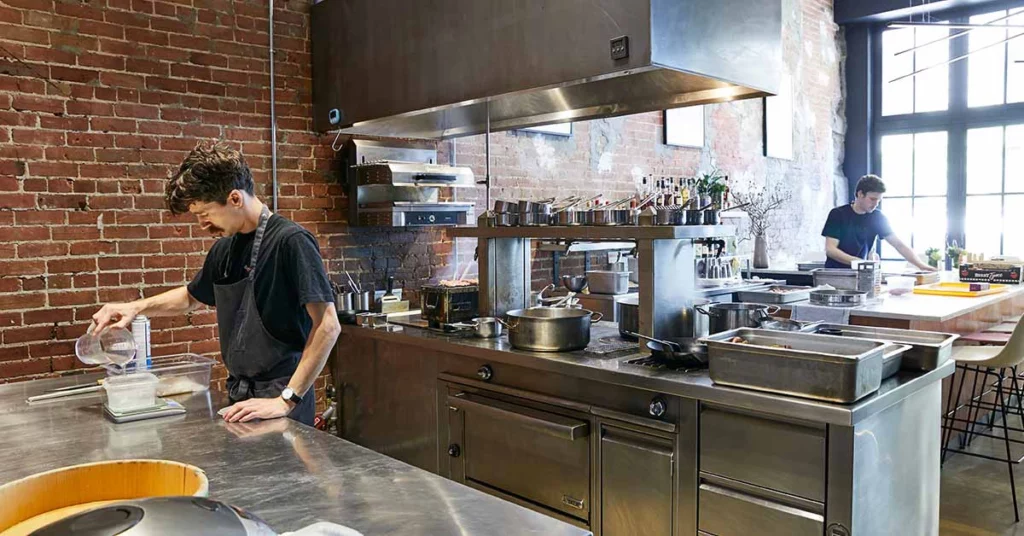Starting your own business can be expensive. This is no exception for those wanting to enter the food and beverage industry. For foodies dreaming of starting their own culinary experience, the expected start-up costs can range from anywhere between $175,500 to $750,500, which is much money upfront.
Between juggling necessary expenses like licenses, leases, and marketing, another immediate cost to consider is the type of restaurant equipment you’ll need before you can open your doors for business. Not only that but adding restaurant automation is thought to be another necessity for the survival of start-ups.
From digital menus and customer-facing displays to self-ordering kiosks and delivery or takeout integrations, there are many considerations to make to ensure your restaurant is efficient as possible. Yet, if you’ve never come across these pieces of equipment before, it can be unclear to determine the necessities from the non-necessities.
To make this less confusing, we’ve created this article outlining several restaurant automation equipment your restaurant needs for improved efficiency, including self-ordering kiosks, automated inventory management, and much more. Keep reading to find out more and see how this equipment could help streamline your restaurant operations today.
Self-Ordering Kiosks
One of the most prevalent pieces of equipment in modern-day restaurants is self-ordering kiosks, a type of point-of-sale (POS) terminal allowing customers to place and pay for orders without engaging with a team member. Since these machines automate part of the order fulfillment process, they provide various benefits for restaurant owners, such as reduced waiting times, increased order fulfillment accuracy, reduced labor costs, improved customer satisfaction levels, and much more.
You can find self-ordering kiosks in various business settings, from hotels, public houses, and restaurants they may be freestanding pieces of equipment, or they could be a tablet device that has been turned into a self-ordering experience using mobile applications.
From freeing up your employee’s time for more demanding jobs to making it easier to adjust your menu, innovative apps, like KioskBuddy, can streamline your restaurant’s operation at the press of a button. These apps can help you to learn how self-ordering kiosks work, and how they could help your restaurant’s efficiency should you choose to invest.
Delivery And Takeout Integration
While delivery and takeout options typically only apply to quick-service restaurants like McDonald’s, and KFC, we are seeing more and more restaurants starting to offer takeout and delivery as a part of their regular offering.
Even fine-dining restaurants like Miller and Carter or independent establishments have hopped onto the craze, using food delivery apps like Uber Eats, DoorDash, and much more. Doing so has proven beneficial for smaller enterprises since it has allowed them to reach a larger audience, increasing check sizes, boosting online visibility, and many other benefits!
However, involving third parties can sometimes make delivery more cumbersome than needed, so many restaurants have opted to install a POS system that handles all their delivery orders in one place. With these types of systems, orders are synced into one listing, making it easier for restaurant staff to deal with them as and when they appear. Different from partnering with third-party food delivery services, which can make things much more complex and result in long wait times, confusion, and more problems.
Automated Inventory Management
Another popular piece of restaurant automation is automated inventory management systems, a piece of software that removes the monotony and repetitiveness of inventory management tasks.
Depending on your automated inventory management provider, your chosen software can complete a variety of tasks without the assistance of a team member, from stock reordering and barcode scanning to real-time data monitoring and forecasting.
As you can imagine, this frees up employees’ time for more highly demanding jobs and can cause many benefits like reduced human error, more flexibility, and a real-time view of stock, plus many more.
Robotic Kitchens
Nowadays, we are seeing the implication of robots across all business sectors, including the food and beverage industry. More popularly seen in the food packing industry, robotics is slowly being introduced into the world of food preparation but hasn’t been fully implemented as the technology isn’t that advanced yet.
From omelet-making robotic arms to burger-flipping robotic sous chefs, we see the invention of more and more innovative robots in the restaurant industry as time progresses. Although it might be a while before this technology is readily available (and the price point might be very high!), robotics is certainly beneficial for streamlining your restaurant’s operation systems.
Since robotics and AI are well known for their reliability and conciseness, they are suitable for replacing humans in repetitive tasks (which we all know cooking can be). They are also known for being more hygienic, cost-efficient, and efficient than their flesh-and-bone counterparts, making them such a popular choice across all business sectors.
If you are looking for ways to help streamline your restaurant’s operations, keep some of the automated tips mentioned above in mind. One of them could be the solution you have been searching for to help improve your restaurant.


